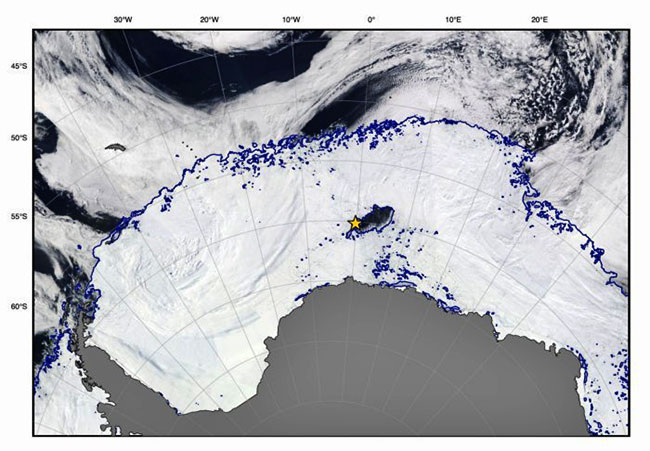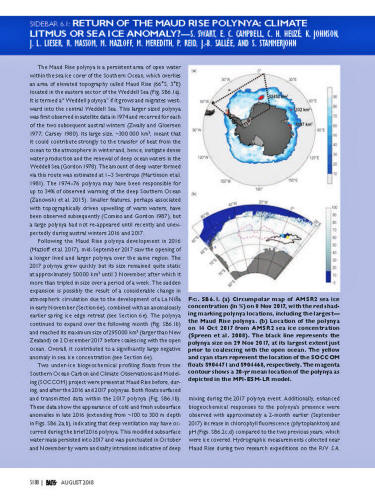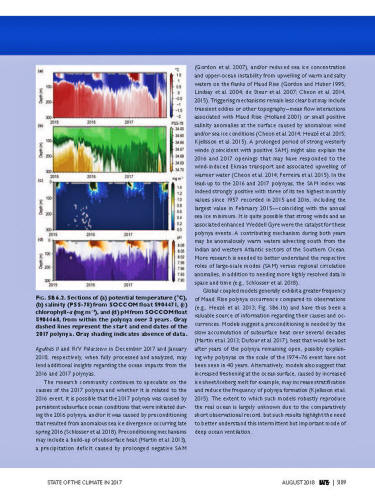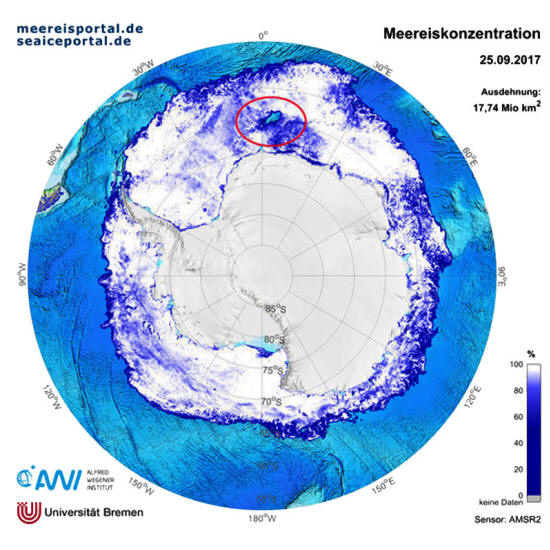|

by Eddie Gonzales Jr.
April
25, 2019
from
MessageToEagle Website

Maud Rise Polynya
of September 2017
(the ice-free area near the yellow star)
seen from space.
Credit: Scar Atlas
Scientists have tried to
solve the mystery of
Polynya in Antarctica for decades.
Maybe they have now an answer that can shed light on what's causing
this strange phenomenon.
There is an unusual geographical region
in Antarctica where scientists
discovered an area of unfrozen water surrounded by a large body of
ice.
Its geographical term
Polynya...
The Maud-Rise Polynya (below images) that was initially
spotted in Antarctica in 1974, and it reappeared in September 2017
at the same location.
It's very strange that unfrozen water can be found where everything
else is frozen. Could heat from below the ground keep the water in
liquid state, or is there another explanation?
 
Return of the Maud Rise Polynya - Climate Litmus or Sea Ice Anomaly?
Extracted from this
this source
Researchers how long wondered how this phenomenon occurred during
Antarctica's coldest, winter months when ice is at its thickest.
A study led by NYU Abu Dhabi (NYUAD)
Research Scientist Diana Francis may now have solved the
mystery.
At the time of the discovery, the
Maud-Rise
Polynya was approximately 9,500 square kilometers large
(equivalent to the landmass of the state of Connecticut), and grew
by over 740 percent to 800,000 square kilometers within a month.
Eventually, the Polynya
merged with the open ocean once the ice started to retreat at the
beginning of the austral summer months.
Prior to 2017, this
phenomenon has only been known to have occurred in the 1970s when
satellite observations started to become more commonly used.
This site has baffled scientists ever since.
The area is very difficult to access so researchers had to use a
combination of satellite observations and reanalysis data to
discover that cyclones (as intense as category 11 in the Beaufort
Scale) and the strong winds that they carry over the ice pack cause
ice to shift in opposite directions, which leads to the opening of
the Polynya.
What Can
Polynya Reveal About Climate Change?
"Once opened, the
Polynya works like a window through the sea-ice, transferring
huge amounts of energy during winter between the ocean and the
atmosphere." said Francis.
"Because of their
large size, mid-sea Polynyas are capable of impacting the
climate regionally and globally as they modify the oceanic
circulation.
It is important for
us to identify the triggers for their occurrence to improve
their representation in the models and their effects on
climate."

Map of the sea ice distribution
around Antarctica on Sept. 25, 2017,
derived from satellite data.
The red circle marks the actual
Weddell Polynya.
Credit: meereisportal.de
"Given the link
between Polynya and cyclones we demonstrated in this study, it
is speculated that Polynya events may become more frequent under
warmer climate because these areas will be more exposed to more
intense cyclones.
Previous studies have shown that under warmer climate, polar
cyclone activity will intensify and extratropical cyclones track
will move toward Antarctica which could decrease the sea-ice
extent and make Polynya areas, closer to the cyclones formation
zone," she added.
|





